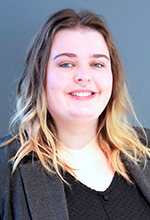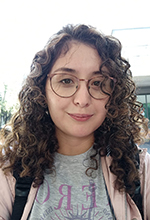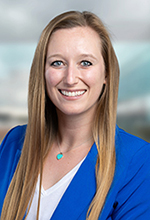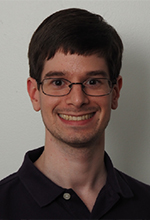Testimonials from Nuclear Physics Day on Capitol Hill participants
On 8 November, nuclear scientists from across the United States participated in a Nuclear Physics Day on Capitol Hill to inform elected officials and their staff about the 2023 Long Range Plan for Nuclear Science. Sixty-five participants representing 30 institutions across 17 states participated. Below are testimonials from participants.
 | Caitlin McCormick, Graduate Assistant at the Facility for Rare Isotope Beams at Michigan State University I am a nuclear chemistry graduate student at Michigan State University/Facility for Rare Isotope Beams in the Nuclear Reactions Group with Professor Kyle Brown, and I am preparing to use the 49Ca beam available at FRIB to investigate the effects of nuclear structure and neutron richness on the formation of a compound nucleus. My ultimate goal is to work at a DOE National Laboratory, but I am also exploring public policy by taking a nuclear security policy course at MSU, attending Distinguished Nuclear Policy lectures at FRIB, and now by advocating for the Long Range Plan for Nuclear Science at the Nuclear Physics Day on Capitol Hill event. I enjoy talking about my work and hearing others discuss their work, and I am very grateful for the opportunity to use those discussions to be a part of advocating for the nuclear science community to Congress and to get a better understanding of the positive result of previous advocacy efforts. |
 | Mariana Tenorio Pita, Graduate Student at Old Dominion University Being a part of something so important for the nuclear community was a very rewarding experience for me. As a graduate student, the Long Range Plan for Nuclear Science has a significant impact in my professional trajectory and it was crucial for me to make people aware that this plan exists. The congressional staff members we spoke with seemed extremely open to learning about the relevance of this document and having the graduate students’ first-hand testimony about our research experience. Something I highlighted was the use of machine leaning tools that I apply in my research. Skills such as this one are not only important in the development of nuclear science, but they are also becoming increasingly requested outside academia. It was encouraging to see interest in the intersection of technology and nuclear science, and I believe these discussions have contributed to a better understanding of the field’s potential impact, not only to improve our understanding of nuclear matter, but even as a source of skillful data science professionals. |
 | Alyssa Gaiser, Assistant Professor of Chemistry at the Facility for Rare Isotope Beams at Michigan State University Being a part of the Nuclear Physics Day on Capitol Hill was a complete privilege and quite eye opening! As an assistant professor at the Facility for Rare Isotope Beams (FRIB) and a member of the nuclear community, it is my job to pay attention to the political scene surrounding nuclear science for both my research, and to best advise students who may be interested in nuclear policy. It is a fun challenge to convey our scientific needs and appreciation for government support to the offices of our Michigan senators and house of representatives in a way that anyone, even largely unfamiliar with science, can fully grasp. Personally, I was able to discuss the importance of my research group’s work toward developing a novel chelator for radium to treat a wide variety of cancers by telling stories about how most radioactive cancer treatments are like putting an octopus in a cube to hold onto all eight corners, but radium is a twelve-armed octopus, a dodecapus, so we have to make a cage specifically for the dodecapus with twelve hold points. Additionally, I have been fortunate to collaborate with other FRIB professors who are working toward measuring the octupole deformation in nuclei that have only been theorized. I often explain this concept with a pool ball vs a pear or avocado shape. If you roll several pool balls into each other, we can well theorize how those balls will interact and bounce around; however, if you throw in a few pears, the whole game changes! The joy and understanding on the faces of the people in the offices of the Michigan senators and house of representatives as we talked about octopuses and pears that were entirely scientific was both rewarding to see and inspirational to continue the remarkable bridge between the nuclear science and political worlds. |
 | Caleb Fogler, Graduate Student at Old Dominion University Caleb Fogler, a PhD student in Physics at Old Dominion University benefited from the opportunity to explain the importance of his research for science and also the data science skills he is acquiring to congressional staff. “We explained how carrying out the Long Range Plan would benefit science, technology, and industry for the United States generally and for Virginia particularly. We also discussed how graduate researchers like me gain skills necessary for the workforce. The staffers showed an interest in what we had to say and asked good questions. I believe they understand the importance of the Long Range Plan, and I hope this leads to support for funding nuclear science in the future.” He met with staff from the offices of Congressman Bobby Scott and Senator Kaine, in addition to other Virginia Congressional staffers. All of the Virginia delegation expressed strong support of Jefferson Lab, a premier user facility for nuclear physics and the location of the recently announced High Performance Data Facility Hub. |
